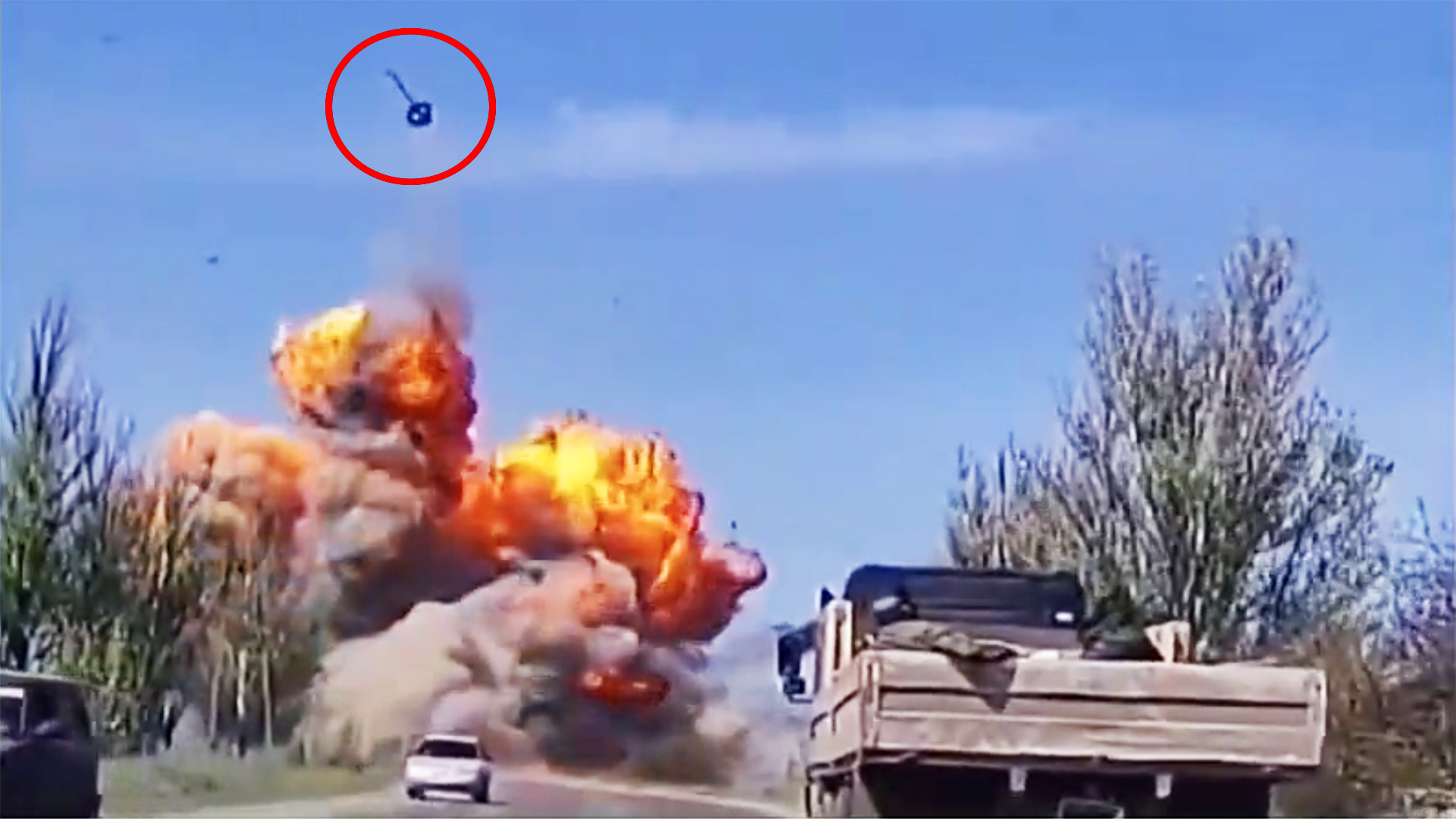According to a Chinese news broadcast, what they claim to be the turret of a Russian T-72B3 tank took to the skies on May 6 after an attack was carried out by Ukrainian forces near Novoazovsk in the Donetsk region. How the attack was executed is currently unknown, but the video recorded and broadcasted by China’s Phoenix Television makes for some absolutely bonkers footage.
The sheer amount of air achieved by the T-72B3’s turret could be chalked up to a design flaw present in many Russian tanks where the rounds for the main gun are stored directly underneath the turret. Therefore, if the tank is hit, a subsequent detonation of that ammunition could result in stories-high heights achieved by the turret. This kind of ‘popping off’ has also become a staple sight in the conflict, but this appears to be the first to have been captured flying this high on camera.
Just for some perspective, the T-72’s turret weighs at least 12 tons. The explosive pressure needed to launch such a mass so high in the air is remarkable to ponder.
According to the news broadcast, the tank was destroyed in an area well behind what is believed to be the current front lines after Chinese media identified the location of the attack. Based on that information and publicly available details surrounding the relative positions of Russian and Ukrainian forces, it has been assessed that this is around 62 miles from the front lines in this region.
Front lines in any conflict are, of course, highly fluid and we don’t know what the exact position of Ukrainian forces relative to where their Russian and Russian-backed opponents might have been at the time. How Ukrainian forces managed to strike at this location also remains up in the air, so to speak.
The Chinese broadcast did mention that the area was under fire from presumed Tochka short-range ballistic missiles and U.S.-supplied loitering munitions at the time of the T-72 popping its top, but it did not attribute the tank hit to a specific weapon system.
Shocking visuals aside, the attack brings with it a significant amount of political and tactical importance. If the explosion were to have occurred somewhere on the front lines, it likely wouldn’t be receiving the coverage it is now.
This is because Novoazovsk has been under Russian control since August 2014 after an attempted advance on Mariupol, and the city is located a mere eight miles from the Russian border. Essentially, Russia has long considered this territory to be a safe enough zone for wartime operations like, for example, civilian evacuation.

Phoenix Television, which is partially owned by the Chinese government, noted that the reason for the media outlet’s presence at the location at the time was because the crew was on their way to Donetsk to film footage of a civilian evacuation that was underway. It was mentioned later in the broadcast that, had they arrived just minutes earlier, they would have been caught in the blast, as well.
Chinese media outlets are essentially the only foreign media sources currently operating in Russian-controlled areas because of the country’s allyship with Russia. Without their presence on the scene, the incident would likely not have been recorded.
Whether or not any information is released regarding the specific weapon Ukrainian forces used to carry out this jarring attack, the strike may allude to a much larger threat to the Russian offensive. The fact that Ukrainians were able to destroy a Russian tank this deep inside separatist territory could mean that guerrilla-style weapons such as improvised explosive devices are on their way to becoming a more recurring aspect of Ukraine’s arsenal. The size of the blast would support this possibility, too.
Whether this blast so deep in Russian-controlled territory is an oddity or a sign of a larger pattern, or at least one that will emerge, isn’t clear. But what is clear is that the turrets of Russian tanks are remarkably capable of flying hundreds of feet into the air.
Contact the author: Emma@thewarzone.com

